I’m writing this post from NYC, sitting in the cutesy Chote Miya (“Chote” means “small” in Hindi and “Miya” is a Hindi/Urdu word that has a range of meanings from “dude,” “master,” “sir” to “husband.”) restaurant of the Chelsea Market. It sells iconic products most Indians of my generation grew up with - Parle G biscuits, Limca (a lemony, fizzy soda), chaat masala, Taj Mahal tea - we preferred their ads laced with melodious jingles over actual programs. However, Chote Miya’s most important offering is street food. Chef Javed was kind enough to send me Vada Pav (hailing from Mumbai) and Raj Kachori (original to Rajasthan) and Mango Lassi to wash them down. Do try them for a culinary spin of India!
Potato is the most important ingredient in Vada Pav as well as Raj Kachori, this ingredient profile extends to overall Indian street food too, which is impossible to imagine without potatoes. If one were to look at the breadth of potato’s presence across the hyper-regional Indian cuisine, it is hard to believe that they are not indigenous to India. First cultivated by the Incas in Peru around 8000 to 5000 BC, potatoes were brought to Europe in the 16th century by the Spanish conquistadors and they proceeded to Asia and Africa along the path of colonization. Though the Portuguese traders brought potatoes to the southern coast of India in the early 17th century, the British were responsible for promoting potato agriculture throughout the country in the 18th century.
And today potato is so pervasive that it is permitted for consumption on religious fasts in India. What a journey?
On a side note, one might wonder, and rightly so, what is the deal with eating while fasting? Well, that’s another post and a mindboggling story.
Potatoes have inserted themselves in the nook and cranny of the differs-every-few-kilometers Indian cuisine. Name the type of dish, and potatoes will go into its preparation - stuffed parathas, sabjis (dry and wet like the recipes below), biryani, desserts (potato halwa) and of course, street food. Potato goes into the preparation of Chaat, Samosa, Aloo Tikki, Batata Vada, Masala Toastie, Bombay Sandwich, Pav Bhaji.
Today’s post contains recipes for two potato sabjis – one a dry sabji of roasted and spiced potatoes called Sukhe Aloo and other is a saucy sabji of potatoes and peas - Aloo Matar. Both have the humility to be a weeknight meal or the star power to be served at a dinner party or a festival meal.
Let’s talk about the type of potato suitable for these sabjis.
We want a good mix of waxy and starchy potatoes because waxy potatoes are low on starch and high on moisture while the starchy potatoes are exactly the opposite. Idaho potatoes with high starch content disintegrate after cooking and are ideal for fluffy mashed potatoes. Since we want each potato piece to maintain its shape when fully cooked, we will use a waxy potato like a red potato or an all-purpose potato like Yukon Gold, which strikes a balance between starch and moisture.
RECIPE - SUKHE ALOO OR ROASTED, SPICED DRY POTATOES
This is one of the most common potato dishes prepared in Indian kitchens and it has a gazillion variations. The versatile sponge that boiled potatoes are, I hope this recipe inspires everyone to let go of their inhibitions about spices and experiment. This version with the fennel seeds is my favorite. After surrendering to the hot oil, they cushion the palate with a subtle sweetish, floral flavor that haunts you. Feel free to replace fennel seeds with cumin and/or mustard seeds. Substitute coriander powder with garam masala or allspice. Serve the Sukhe Aloo with Dal Chawal.
Ingredients
2 medium all-purpose potatoes like Yukon Gold (about 400 grams when I weighed before boiling)
2 tablespoons vegetable oil
1 teaspoon fennel seeds
1/8 teaspoon turmeric powder
1 teaspoon coriander powder
¼ teaspoon red chile powder
½ teaspoon raw mango powder aka amchoor or 1 teaspoon lime juice
1/2 teaspoon salt
Serves 2-3
Method
Scrub two potatoes under running water to remove dirt stuck in crevices
Cut them in half and place them in a pot. Cutting in half speeds up the cooking process.
Add enough water to cover all the potatoes. Cover the pot with a lid and turn the heat to high. Once the water comes to a rolling boil, uncover, reduce the heat to medium, and keep an eye on the potatoes. After 20 minutes, insert a knife into the potatoes, if it pierces through smoothly, they are ready. If not, boil them for 5 minutes more and perform the knife test again.
Let the potatoes drain in a colander and cool down. Peel them.
Crush the potatoes roughly with hands to make craggy pieces. Spices stick better to craggy pieces. Ensure the pieces are about 1” x 1”. Set them aside.
Heat 2 tablespoons vegetable oil in a thick-bottomed or nonstick skillet. Let the oil heat up for two minutes on medium heat, and add 1 teaspoon fennel seeds.
Once fennel seeds stop crackling, combine potato pieces, 1/8 teaspoon turmeric powder, 1 teaspoon coriander powder, ¼ teaspoon red chile powder, ½ teaspoon amchoor powder or 1 teaspoon lime juice and 1/2 teaspoon salt.
Stir to avoid potatoes from sticking to the skillet and cook for about 7-8 minutes. The potatoes should acquire an uneven brown crust giving a crispy- on- the-outside- and-soft-on- the- inside texture. Garnish with cilantro or parsley.
Stuff leftover Sukhe Aloo inside a corn tortilla, top it with some cilantro/parsley chutney and pickled onions.
RECIPE - SAUCY POTATO PEAS CURRY AKA TARIVALE ALOO MATAR
Another weeknight potato dish, Aloo Matar is enjoyed by kids, adults, senior citizens, picky eaters and those who frown on vegetables too. Aloo Matar pairs beautifully with store-bought toasted naan or bread roll.
Ingredients
2 medium Yukon Gold potatoes
2 tablespoons plain yogurt
2 tablespoons vegetable oil
¼ teaspoon black mustard seeds
¼ teaspoon cumin seeds
5 curry leaves
1 tablespoon peeled, grated ginger
¼ teaspoon turmeric powder
1 medium roma tomato diced into ½” x ½” pieces
½ cup frozen and thawed peas
1 pinch sugar
1 teaspoon coriander powder
1/4 teaspoon red chile powder
1 teaspoon salt
½ teaspoon garam masala
Chopped cilantro for garnish
Serves 2-3 people
Method
Scrub two potatoes under running water to remove dirt stuck in crevices
Cut them in half and place them in a pot
Add enough water to cover all the potatoes
This is a good time to take 2 tablespoons yogurt out of the refrigerator to let it come to room temperature. This step is important because if you drop cold yogurt into a hot bubbling mixture, it is going to curdle and make the final dish look unpleasant. Whisk it with a spoon to smoothness and let it await its turn in the recipe.
Cover the pot with a lid. Once the water comes to a rolling boil, uncover and keep an eye on the potatoes. After 20 minutes, insert a knife into the potatoes, if it pierces through the potato smoothly, the potatoes are ready. If not, boil them for 5 minutes more and perform the knife test again.
Turn the heat off. Drain the water and let the potatoes cool down in a colander.
Peel the potatoes once they are cool. Cut them into 1” x 1” pieces.
Or crush them in your hand to make uneven, craggy pieces. This way some pieces are mush, and they help the sauce thicken up in the final dish. Set the potatoes aside
Heat 2 tablespoons vegetable oil in a sauté pan at medium heat.
After 3 minutes, add ¼ teaspoon mustard and ¼ teaspoon cumin seeds. The seeds will start sizzling and popping right away.
Add 5 curry leaves, 1 tablespoon ginger, ¼ teaspoon turmeric powder, 1 tomato diced, ½ cup thawed peas, a pinch of sugar, 1 teaspoon coriander powder, 1/4 teaspoon red chile powder and 1 teaspoon salt.
The tomatoes will shrivel and lose their moisture in 7-8 minutes and start secreting oil.
Combine 2 tablespoons yogurt and stir well and 2 cups water.
Add the potatoes once this golden tomatoey liquid starts bubbling.
Now let the sabji come to a rolling boil. Crush a few potatoes with the back of a spoon. This will thicken the sauce.
Add ½ teaspoon garam masala.
Turn the heat off, garnish with cilantro.
Serve hot with roti, paratha or store-bought naan or any bread of your choice.
TECHNIQUE – USING POTATO AS A THICKENER
Cooked potato is an excellent thickener of stews and sauces and creates a smooth, satiny texture. While making a saucy potato sabji, definitely avail of this feature. Fish out a couple of potato pieces from the boiling sabji into a plate and crush the pieces with the back of a wooden stirring spoon. Pour this mash into the sabji and watch how the liquid transforms into a sauce. Keep 1-2 boiled potatoes in your fridge and remember to use a half or the full one as a thickener like corn starch in gravy-like dishes or in soups. In this way the potato will silently perform its task of a thickener without making its presence felt.
Apply the same trick while cooking beans. Once the beans are fully cooked but still the liquid in which they are cooking seems distinct and disparate from the beans, crush some beans with the back of the ladle in the pot itself.
What I’m watching
OMG, you HAVE to watch Dept Q on Netflix. I am on a holiday in NYC and walking like no wheels exist in the world and still by the end of the day, I’m eagerly lapping up a few episodes. Mathhew Goode is a terrific actor and not bad on the eyes too.
The next post of ChutneyLovers will be Tomato Omelet, a recipe orchestrated to suit the palates of non-egg eaters.

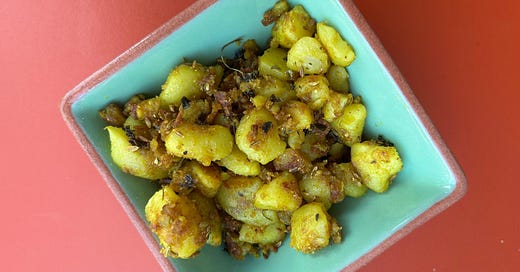


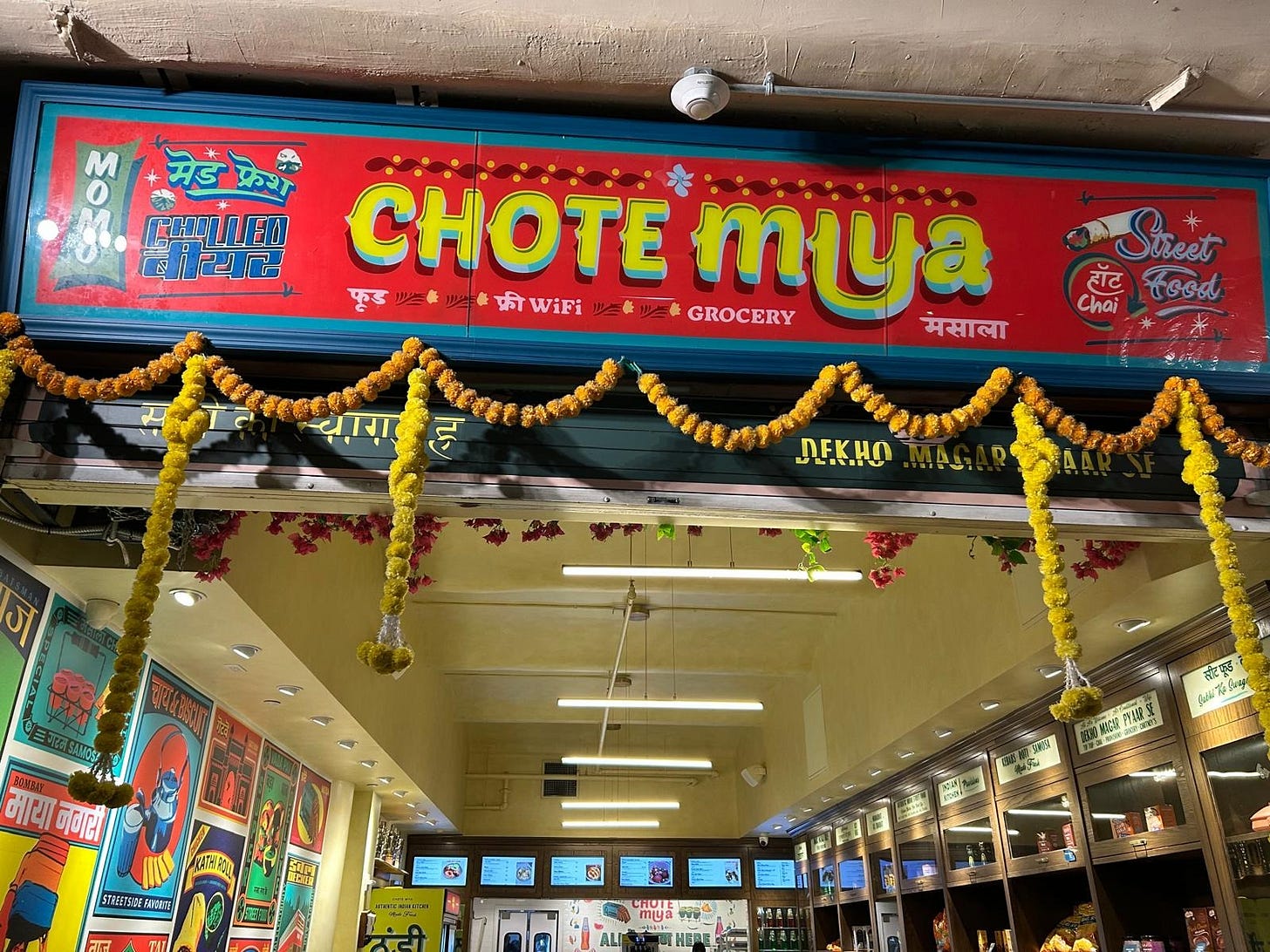
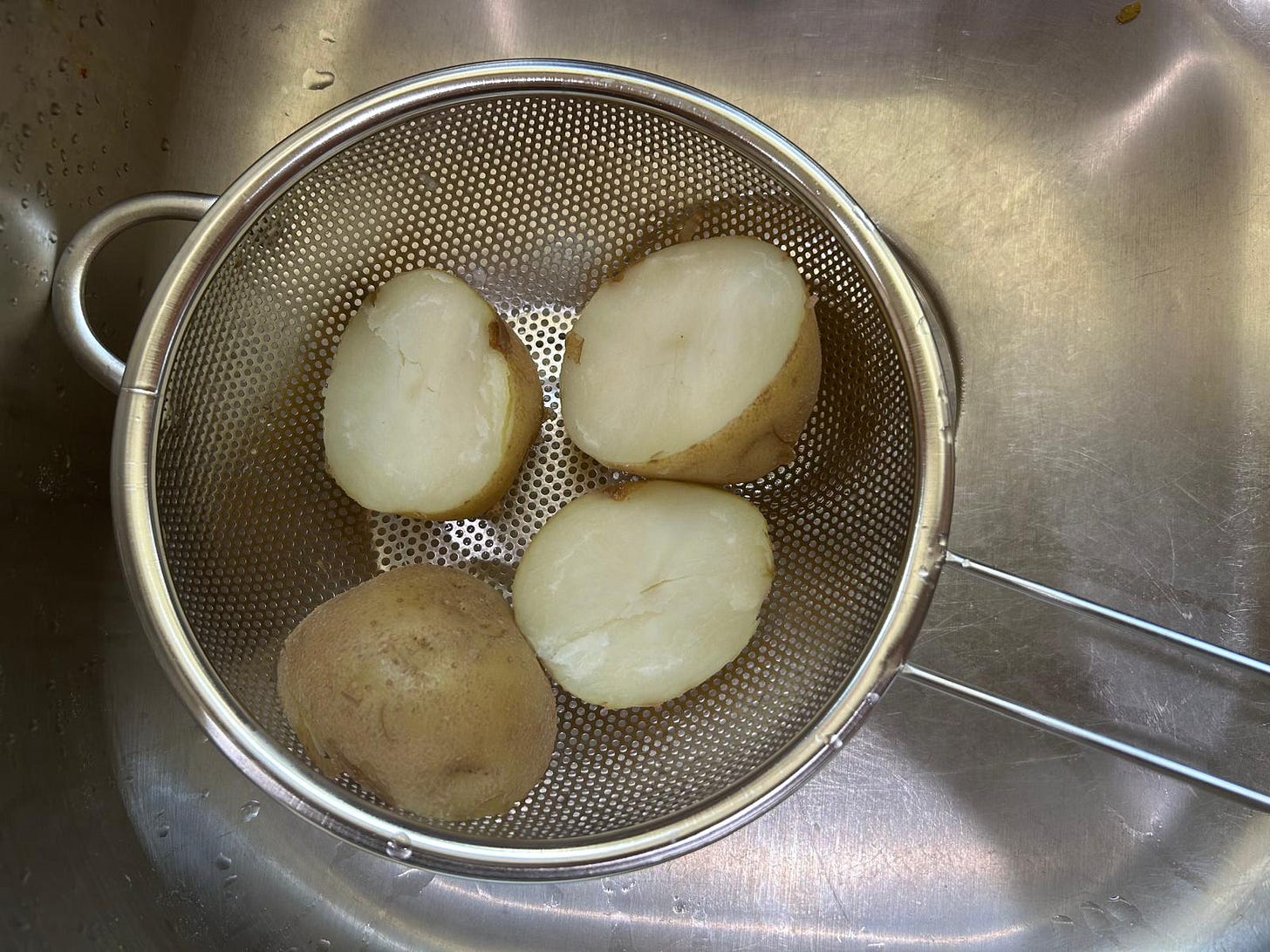
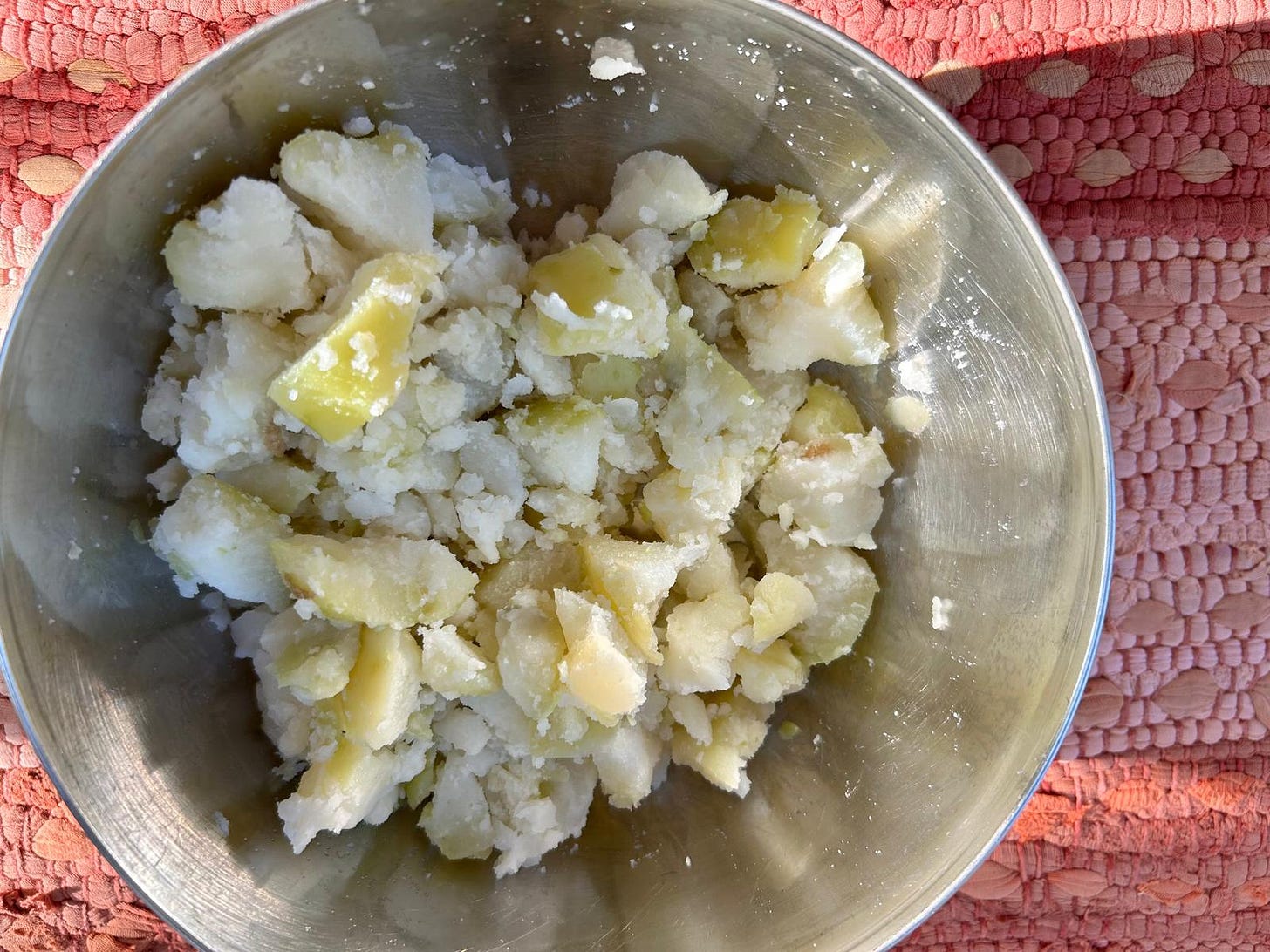
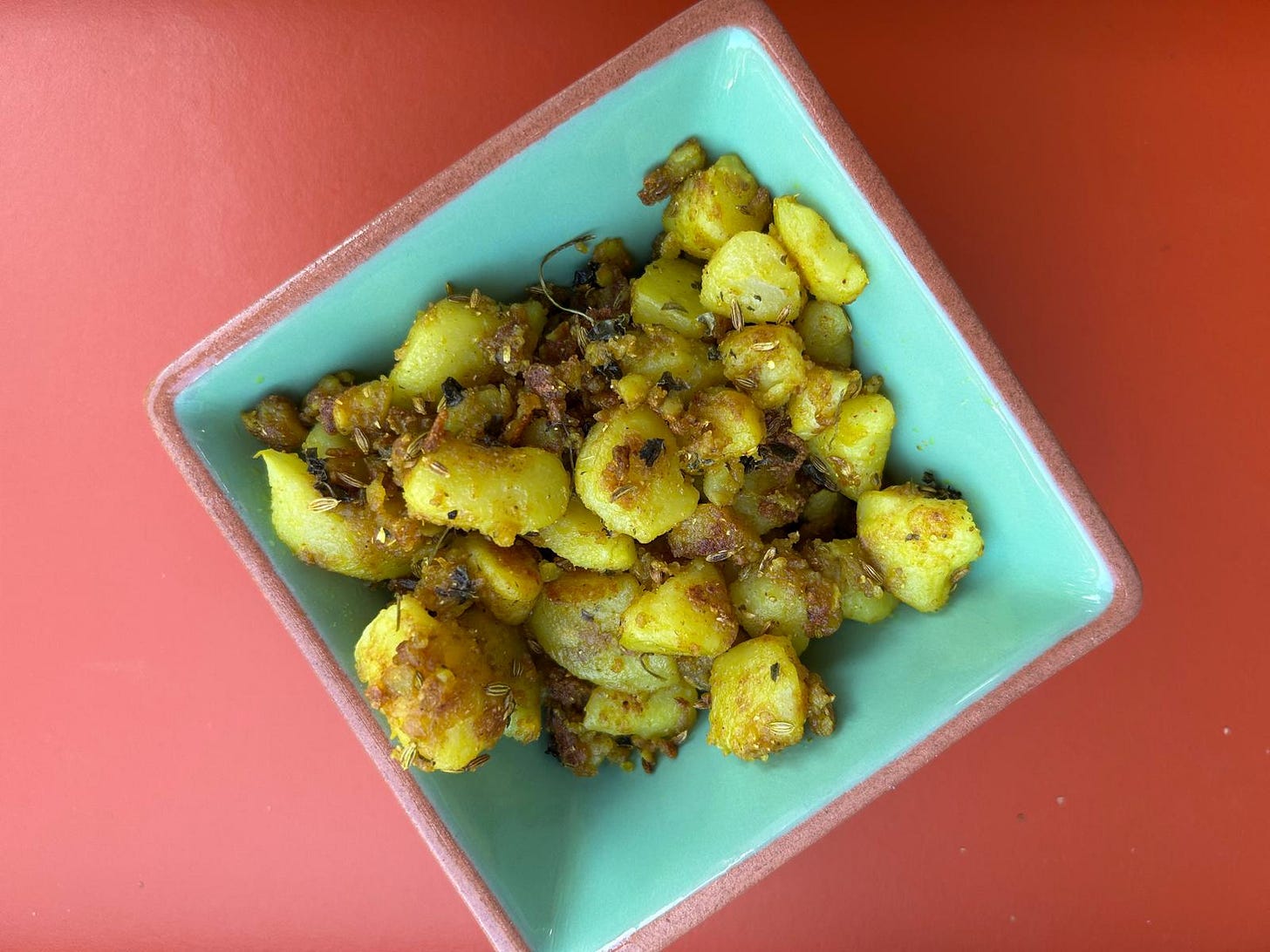

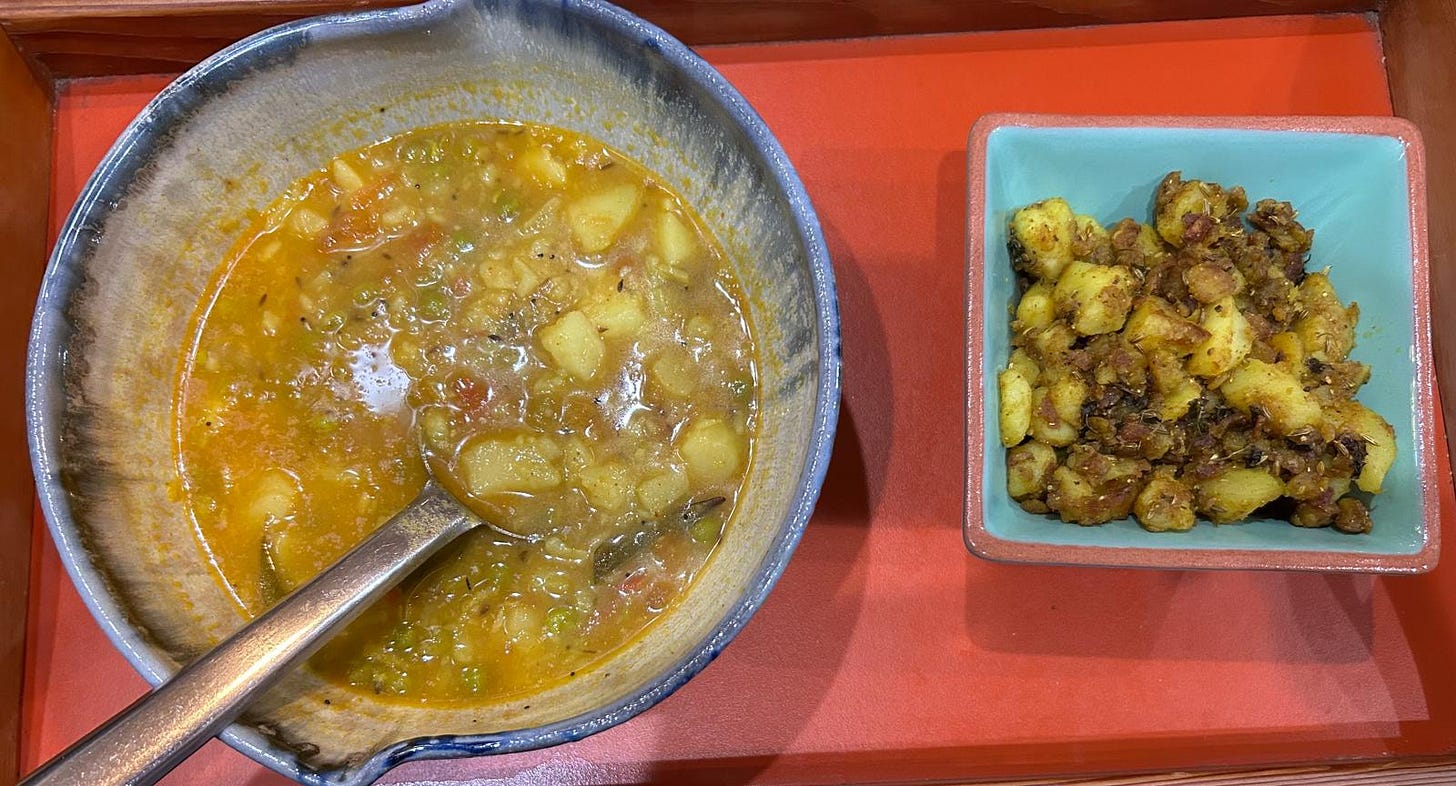
I've been to Chelsea Market but have not eaten here! Adding to my list of places to go next time I'm in NYC!
I'm loving Department Q as well!